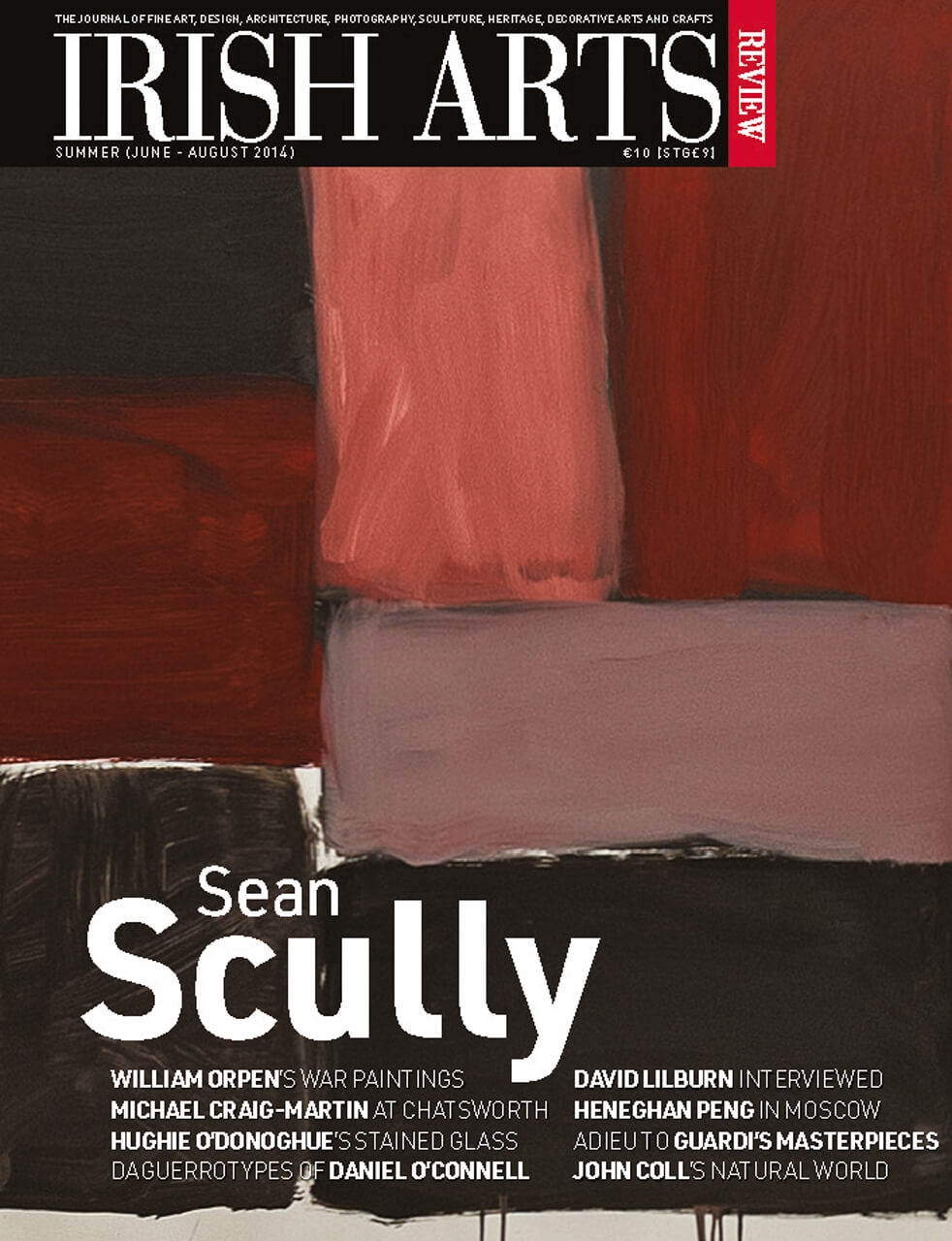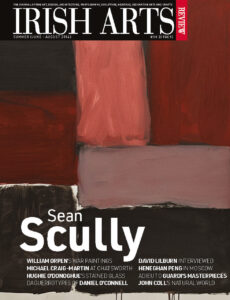

Oisín Roche’s Standing Portrait is a reflection on the nuances of identity, writes Gerry Walker of this year’s recipient of the Ireland-US Council/Irish Arts Review Portraiture Award
The Ireland/US Council, in conjunction with the Irish Arts Review have selected Dublin-artist Oisín Roche for this year’s Portraiture Award. This prize is given in recognition of notable merit in the genre and it is part of the Council’s ongoing commitment to the arts and art education in Ireland. Oisín Roche has built a considerable reputation for himself in the past ten years. He has received a variety of commissions, prizes and travel bursaries. In 2008 his portrait of journalist John Waters was selected for exhibition at the BP portrait exhibition at the National Portrait Gallery of London. He was awarded an RHA gold medal for painting in 1996, and collected prizes in 2007 and 2009 from the Watercolour Society of Ireland. He is equally proficient in landscape, portraiture and still life. And while his urban streetscapes are both energetic and tranquil – reflective of a Post-Impressionist European exuberance, his excercises in still life have a clarity reminiscent of the Dutch and Flemish masters. His portraits, particularly those of friends and acquaintances, recall the spirit of French intimism at its most engaging.
Portrait panting is a complex process. It involves three significant elements – the artist, the subject and the viewer, all of whom invariably struggle to engage together. Each is inevitably mindful of the other. John Singer Sargent once admitted that every time he painted a portrait he lost a friend. Taking a more pragmatic view, Salvador Dali noted that he never painted a portrait to look like the sitter, choosing to believe instead that the sitter would grow in time to look like the portrait. Nobody is neutral in the mindset that is portraiture. Oscar Wilde asserted that most modern portrait painters were doomed to oblivion on the grounds that they never painted what they saw. They merely painted what the public saw, and the public never saw anything. It is a testament to Oisín Roche’s assurance and accomplishment that he most likely retains his friendships and manages to steer well clear of oblivion.
In painterly terms he harbours the ambition to transcend what he describes as the ‘banality of narrative’. He acknowledges the influence of artists like John Singer Sargent, Egon Schiele and Emil Nolde. It is however more apparent that he occupies a space firmly within the William Orpen and European school tradition. He is particularly adept in the use of oils and pastels. His sitters occupy tranquil and occasionally neutral spaces which appear calculated to minimize focal distraction and lend exclusive emphasis to personal presence. The portrait selected for the Ireland-US Council/Irish Arts Review Award is a work in pastel. It depicts a woman dressed in dark clothes; her hatband shows a splash of red which is the sole colour focus in an otherwise muted palette. In this Roche employs a device which is reminiscent of that employed by Vermeer in Girl with a Pearl Earring. Without the pearl the overall image would not resonate. Roche’s sitter does not engage directly with the viewer. She gazes contemplatively to the side – a remote but very definite presence. Her hat is the only prop which proclaims a definitive aspect of her identity, echoing Baudelaire succinctly who, when commenting on the art of portraiture, observed that ‘gesture, grimace, clothing even, all combine to realize character’.
Roche has used the services of a professional model for this painting. In so doing he has raised another conundrum for the portrait painter. One school of thought contends that for most successful outcomes, the sitter should be well known by the artist. Matisse, for example, said that portraiture was the most curious of art forms and so demanded an almost total kinship with the model. Others disagreed. The great German Expressionist and caricaturist Otto Dix was firmly of the opinion that in order to paint someone’s portrait successfully it was better not to know the subject at all. Roche’s figure stands out from a neutral background and this has the effect of isolating the figure in time and space. Inevitably the question is posed – what was the underlying intent in depicting the subject in this manner?
Artists are not merely neutral conduits through which cultural messages flow. They express personal prejudices as much as preferences and this is inevitably invested in their work. It is also apparent that portraiture says as much about the artist as it does about the subject and the viewer. Evidence for this can be found by consideration of the nature and the level of our empathy and the range of our capacity for sympathetic responsiveness. If Roche’s portrait depicts anything it must be the resonance of isolation without solitude. It is a statement of existential poignancy and the assertion of identity, for in life as in art we all paint our own portraits.
Gerry Walker is a writer and a critic and a regular contributor to Irish Arts Review.



